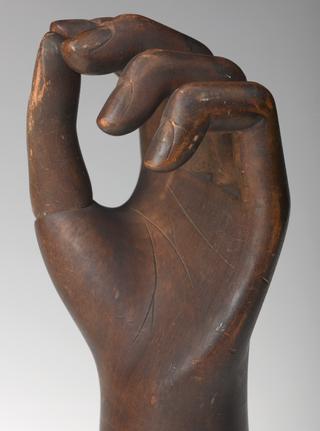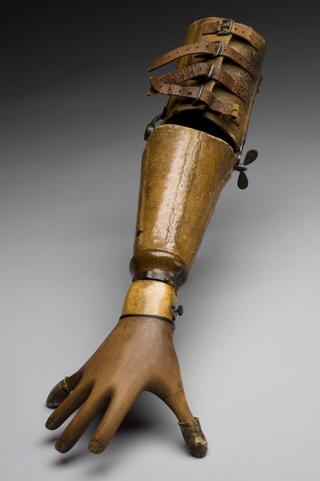
Protective helmet made for a child living with thalidomide impairments
- Made:
- 1960-1970 in unknown place

Protective helmet worn by children living with thalidomide impairments including limb difference while wearing lower limb prostheses or artificial legs, whilst learning to walk, unknown maker, 1960s
Just as each person’s experience of living with thalidomide impairments is different, so is their experience with prosthetic or artificial limbs. This might be due to the attitudes of their families and medical professionals they met. Fittings often did not take into account what children could do with the limbs they had. Protective helmets like these were worn by children who had upper and lower limb difference while learning to walk with artificial or prosthetic legs. Bulky, heavy, painful to wear and hard to use, many felt they had less independence whilst wearing the prosthetic limbs than learning to adapt without them.
Prosthetic or artificial limbs were in part meant to act as reparations for the impairments that thalidomide had caused. They were frequently used as a way of visually “normalising” the bodies of people living with thalidomide impairments. Many question who these supposed improvements were really meant to help. Some children underwent operations to make the prosthetic limbs fit better which could include amputations. Children had little input into these decisions and the trauma of some of these medical interventions is still felt today, both emotionally and physically.
Thalidomide was a compound found in drugs prescribed to people in the late 1950s and early 1960s. Although today it is associated primarily as a treatment for pregnancy related nausea, it was also prescribed to anyone experiencing symptoms of colds, flu, headaches, anxiety, and insomnia. Thalidomide causes nerve damage in the hands and feet of adults, but when taken in early pregnancy it causes impairments such as limb difference, sight loss, hearing loss, facial paralysis, and impact to internal organs. One tablet is enough to cause significant impairments. Researchers later identified that there was a link between the impairment a person is living with, and which day of the pregnancy thalidomide was taken. UK distributors withdrew the drug in 1961 and a government warning was issued in May 1962.
Details
- Category:
- Orthopaedics
- Object Number:
- 1999-572
- Materials:
- textile
- type:
- helmet and thalidomide
- credit:
- Richmond Twickenham and Roehampton Healthcare NHS Trust




